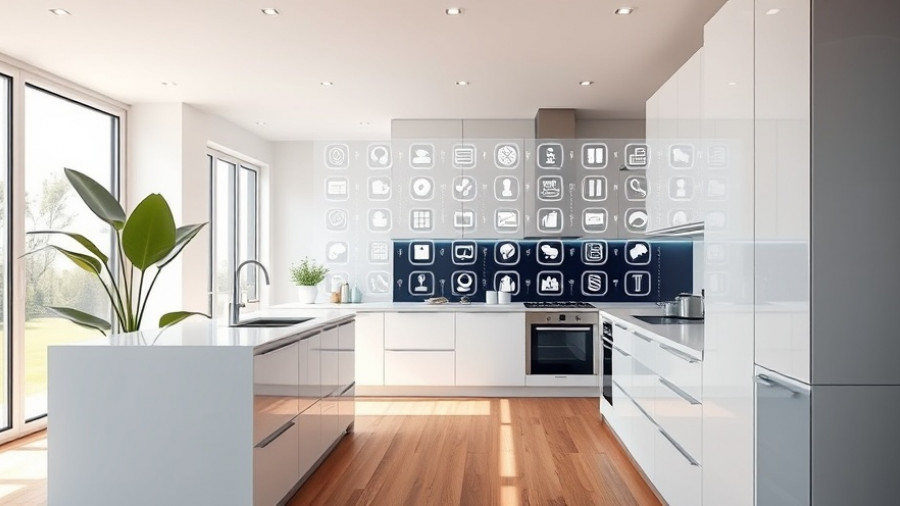
The Future of Smart Homes: A Closer Look at 2026
The concept of a 'smart home' is not merely a catchy phrase; it has reached a level of significance that is undeniably reshaping daily life. Fast forward to 2026, and we find ourselves on the brink of a transformative era where homes will evolve into sophisticated, self-managing environments. This evolution centers around three pivotal pillars: seamless automation, advanced security, and enhanced energy management.
Seamless Automation: Homes That Anticipate Your Needs
As we look toward 2026, one of the most exciting advancements in home automation is its shift from reactive to proactive behavior. This means that rather than waiting for commands, our homes will learn and adapt to our daily routines. Imagine a scenario where your blinds open at dawn, your heating adjusts before you arrive home, and your coffee pot starts brewing as you wake up. This is not just futuristic fantasy; it's the future of home automation, and it's powered by AI-driven devices capable of predictive actions based on learned habits.
Smart speakers and appliances, such as the Google Home or Amazon Echo, will evolve into intuitive central hubs, controlling everything from lighting to entertainment systems. Advanced algorithms will enable these devices to communicate, providing a comprehensive and cohesive experience that blends seamlessly into your lifestyle.
Revolutionizing Security: Peace of Mind with Smart Technology
Security has always been a top priority for homeowners, and the innovations coming in 2026 will redefine what it means to feel safe. While today's security systems alert homeowners to motion detected or doors that are left unlocked, the future holds promise for a much more intricate security framework.
Imagine security systems equipped with AI that not only alerts you when someone is at your doorstep but differentiates between a package delivery and a potential intruder. Enhanced smart locks will allow homeowners to provide limited-time access to service personnel, creating a secure yet flexible environment. The integration of biometric technologies could further elevate security measures, ensuring that only authorized users can enter your home, thereby significantly reducing the risk of break-ins.
Energy Management: Striving for Independence
With rising energy costs and a heightened focus on sustainability, homeowners are looking to strike a balance between efficiency and self-sufficiency. By 2026, we expect to see a significant increase in the adoption of solar energy systems, which will not only reduce monthly bills but also help alleviate the environmental impact of traditional energy sources. The utilization of solar panels and battery storage systems will become mainstream, providing homeowners not only with energy savings but also a means of contributing to a cleaner planet.
Smart homes will optimize energy use through AI that learns household patterns. If you're typically home during certain hours, the system will adjust energy use to align with those times, learning when to store energy or even sell back excess production to the grid, fostering not only personal savings but a broader environment of sustainability.
AI Integration: Personalization at Its Best
Looking ahead, the integration of AI in smart home technologies will offer a level of personalization that we can only begin to imagine. No longer will a simple device sit idly by; it will actively learn your preferences. AI systems will track user data, enhancing their ability to provide energy-efficient solutions and saving strategies based on individual habits and preferences.
As home automation gears up for deeper integration, tools like the Matter protocol will emerge, ensuring compatibility across a wide range of devices, eliminating the hassle of managing multiple systems, and delivering a unified user experience. This will allow consumers to feel at ease with their smart solutions, varying from appliances to security systems.
The Road Ahead: Embracing Smart Living
The advancements expected by 2026 signal not just a revolution in technology but a transformative shift to homes that truly elevate our living experience. By embedding automation, security, and energy management into daily life, homes will cater to individual needs while fostering a community value system focused on sustainability.
In conclusion, the smart home of 2026 represents a remarkable leap towards a more efficient, secure, and comfortable living environment. As homeowners begin to embrace these changes, they will find themselves not just residing in a house but thriving in an interactive ecosystem that supports their daily life.
 Add Row
Add Row  Add
Add 



Write A Comment